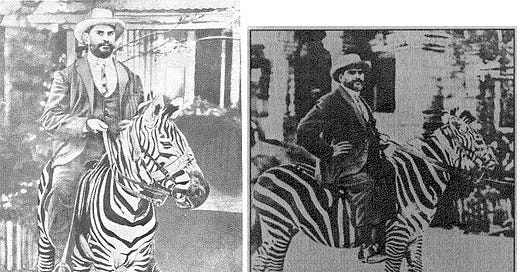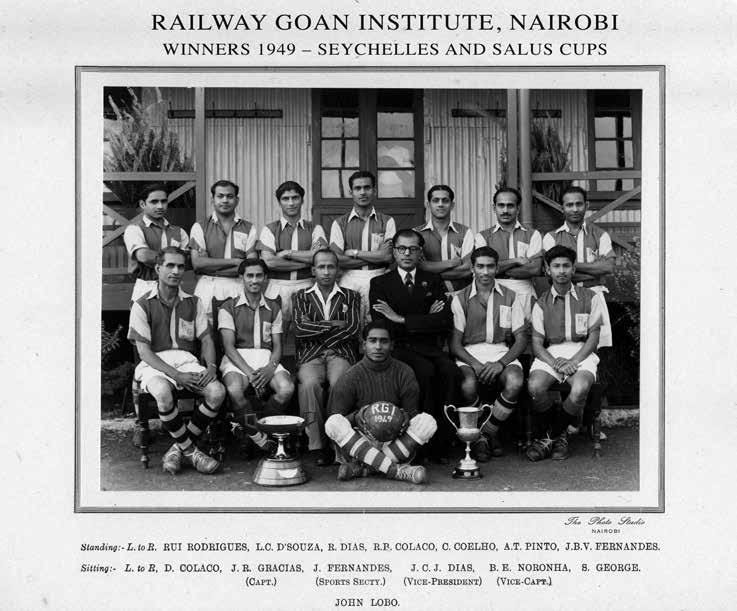The forgotten legacy of the Goan community in Kenya
The community laid foundation of christian religion, health, and education
In its halcyon days, Goan Institute was the bastion of Kenyan politics, Goan culture, sports, and much more.
Several years back - as they were preparing their 100-year celebrations- I met a fine man, Vincent Azavendo, then the club chairman, who showed me around.
I was a young journalist seeking to uncover memories of a city. I was lucky after discovering this small compound- on the way to Eastleigh - where the Goan collective memory was stored. Azavendo showed me old cabinets that were still overflowing with trophies of yesteryears. Still, the story behind this institute hid the secrets of a minority race that had arrived in East Africa to look for fortune, work, and progress. They sailed to Kenya as tailors, clerks, doctors, and lawyers.
In this reclusive compound, near Parklands Police Station, you could chance of some of the best-known Goans in Kenya: Nairobi’s pioneer physician Dr. Rosendo Ayres Ribeiro, Joachim Nazareth, Francis Xavier D’Silva, better known as Baba Ndogo for his generosity for impoverished whites who lived in Baba Ndogo area, lawyers Fitz de Souza and John Nazareth, Pio Gama Pinto, a latter-day political activist, and Joseph Zunzarte Murumbi, the half-Goan who was Kenya’s Vice-President- albeit for a brief period before he was scared out of the position.
There was also Joe Rodrigues, a pioneer journalist, and another writer Cyprian Fernades.
Those who have seen early pictures of Nairobi must have noticed a man riding atop a Zebra. That was Dr Ribeiro in his escapades to attend to his patients. He had bought the young Zebra in 1907 and tamed it. He later sold it to Bombay Zoo for 800 Rupees.
Ribeiro was instrumental in founding the first Goan Institute and many other schools, including Parklands High School, first named Dr. Ribeiro Goan School in his honor when it opened its doors in 1931. In 2015, it reverted to Dr. Ribeiro Parklands School – a great effort to honor a doctor who had done so much for the country.
With his brother Campos Ribeiro, they became famous names in colonial Nairobi, and Campos was the first President of the Goan Club.
There was something else about Dr. Ribeiro. He was said to have some magical anti-malaria tablets, and he was everyone’s doctor in the emerging township of Nairobi, especially during the days that plague outbreaks were common. At one point, his Bazaar Street clinic was razed down as the administrators battled Nairobi rats. It is claimed that Dr. Ribeiro is the one who advised the medical officer for health to burn the Indian shanties.
And now to Baba Ndogo, aka Xavier da Silva. He had decided to help the impoverished whites who lived adjacent to his 40 acres in Baba Ndogo, where they kept African and Seychellois mistresses. So he built several bungalows to rent and planted many mangos in Ruaraka. Most of the trees can still be spotted in Ruaraka.
The place of Goans in building the foundation of modern Kenya is downplayed. Some of the institutions they fundraised for, and built, have largely been forgotten, while most of those in public service were bundled out during the Kenyanisation process. Today, finding any Goan in public service is hard – a shame for a multi-racial country.
But the institutions they built still stand as a reminder of the halcyon days. At the junction of Prof Wangari Maathai Road (former Forest Road) and Limuru Road still stands St Francis Xavier Catholic Church (below) – the signature project for the Goan catholic community in Nairobi. This church was built in memory of Saint Francis Xavier – the man who had built Kenya’s first Chapel in Malindi in 1542 when he landed there on his way to India. The small thatched Chapel still stands to date!
A profoundly religious group, the Goans in Nairobi had also built the Holy Family Basilica and St Theresa in Eastleigh and are credited as the bedrock of the catholic faith in the city.
The Goans had arrived in Nairobi from the Portuguese colony of Goa – today the smallest State of India- when the Kenya-Uganda railway was being laid. Together with the Indians, the predominantly Catholic Goans got jobs as clerks while the less educated arrived in Kenya as tailors. Goans are credited as the original tailors in Kenya, and they formed Tailor’s Society. One of the best-known was Alleluia Fernandes, who stitched suits for Jomo Kenyatta at one point.
Like the Europeans, and being a minority, the Goans started exclusive clubs, and they – and the Indians- are credited for bringing the popular game of cricket into Kenya – and this was first played at the modern day ‘Kirigiti’ stadium in Kiambu, a corruption of the word cricket.
The Goans had founded the Portuguese Cricket Club in Nairobi in 1899 – just a few years after the railway reached this edge of the Kikuyu escarpment. As new settlers and seeking an identity, they formed clubs.
The Portuguese Cricket Club evolved into Goan Institute, which opened its doors in 1905. However, it was in the 1980s that President Moi forced Goan Institute to drop its name, and it adopted the name Nairobi Institute. It has since reverted to its original name.
By getting junior administrative positions in the colonial government, they could not join the all-European Nairobi Golf Club, which was in 1936 allowed to use the prefix “Royal” They thus started community clubs, including the Goan Gymkhana and the exclusive Goan Railway Club.
But there was a split with the elite Goans, employed by the railway – by then the best blue-chip employer- and the low-ranked tailors. That saw the emergence of the Indo-Portuguese Institute (later Goan Institute), which was supposed to rival the Railway Goan Institute, then located on the grounds of modern-day Pangani Girls High School. There was also the Goan Union, whose members were once dismissed by P.X. da Gama Rose as “illiterate servants not equipped to engage socially or politically with the educated classes.” This divide was because the latter conducted meetings in the Goan language of Konkani.
Goan Institute was the place of some elite colony workers, and when they built their dancing hall – they fixed some springs to support the wooden floor, and apart from Charter Hall in Nairobi, this was the only other dancing floor with such springs.
As the center of sports, this was the heart of both cricket and hockey – and in the 1960s, when the likes of Kipchoge Keino, Ben Jipcho, and Naftali Temu surprised the world of athletics, there is one other name that was a product of Goan Institute: Mombasa-born Seraphino Antao - first Kenyan athlete to win a gold medal at an international level.
Antao died in 2011 and was Kenya’s triple gold medallist in the 100m, 200m, and 400m during the 1962 Commonwealth Olympic games. As a result of the training they received, thanks to Goan Institute, Kenya was once ranked number four, and Goan Institute produced splendid stars such as Egbert Noronha, Sauda George, Reggy Fernandes, and Alu Mendosa, among others.
Interestingly, the Goans are hardly mentioned after they were thrown around after independence, and most of them had to leave for either U.K. or Canada. These silent pioneers have, at best, kept away from local politics after one of their own, Pio Gama Pinto – the best bet on Kenyan politics – was gunned down in Nairobi, the first politician to be assassinated in independent Kenya.
The Goans are part of Kenya's unique history.









Thank you for this beautiful read❤️
I have shared it with many. Each one enjoyed it as much as I did... including my 86 year old Mama, who is a fan of your Sunday Nation column!
The 'Vice President' in the Railways Football Team photo, is her Dad, my Grandad!🥰⚽🎶
Some of Dads best friends were Goans - trained to work on the railways they also provided mechanic services for cars and various appliances... they could fix anything !
At Starehe Boys we had a dashing Goan teacher Ms Pinto - she was articulate and smart and then Father Sequiera joined us - a great and often forgotten community in Kenyan Indo Asian history